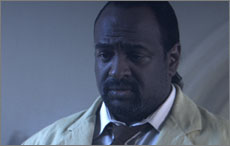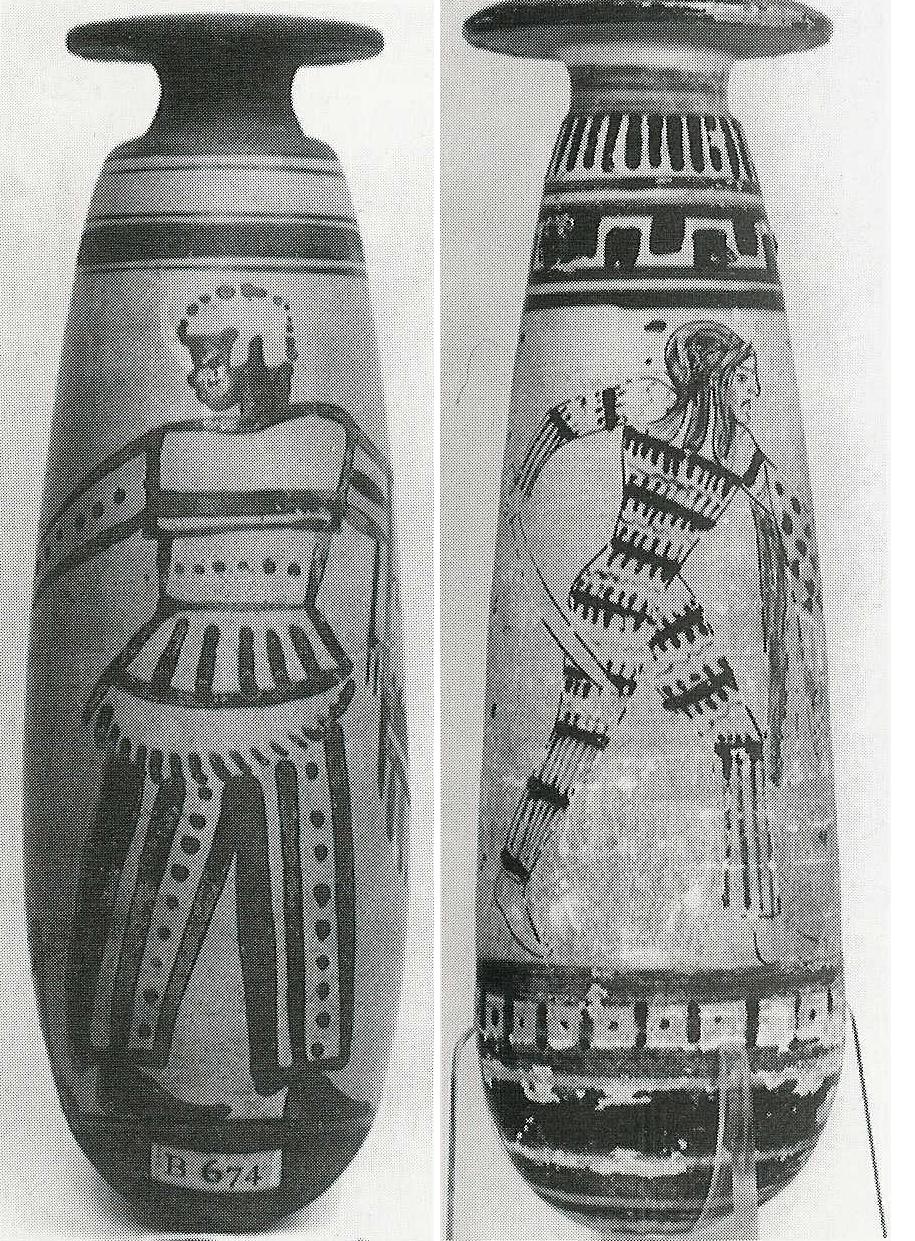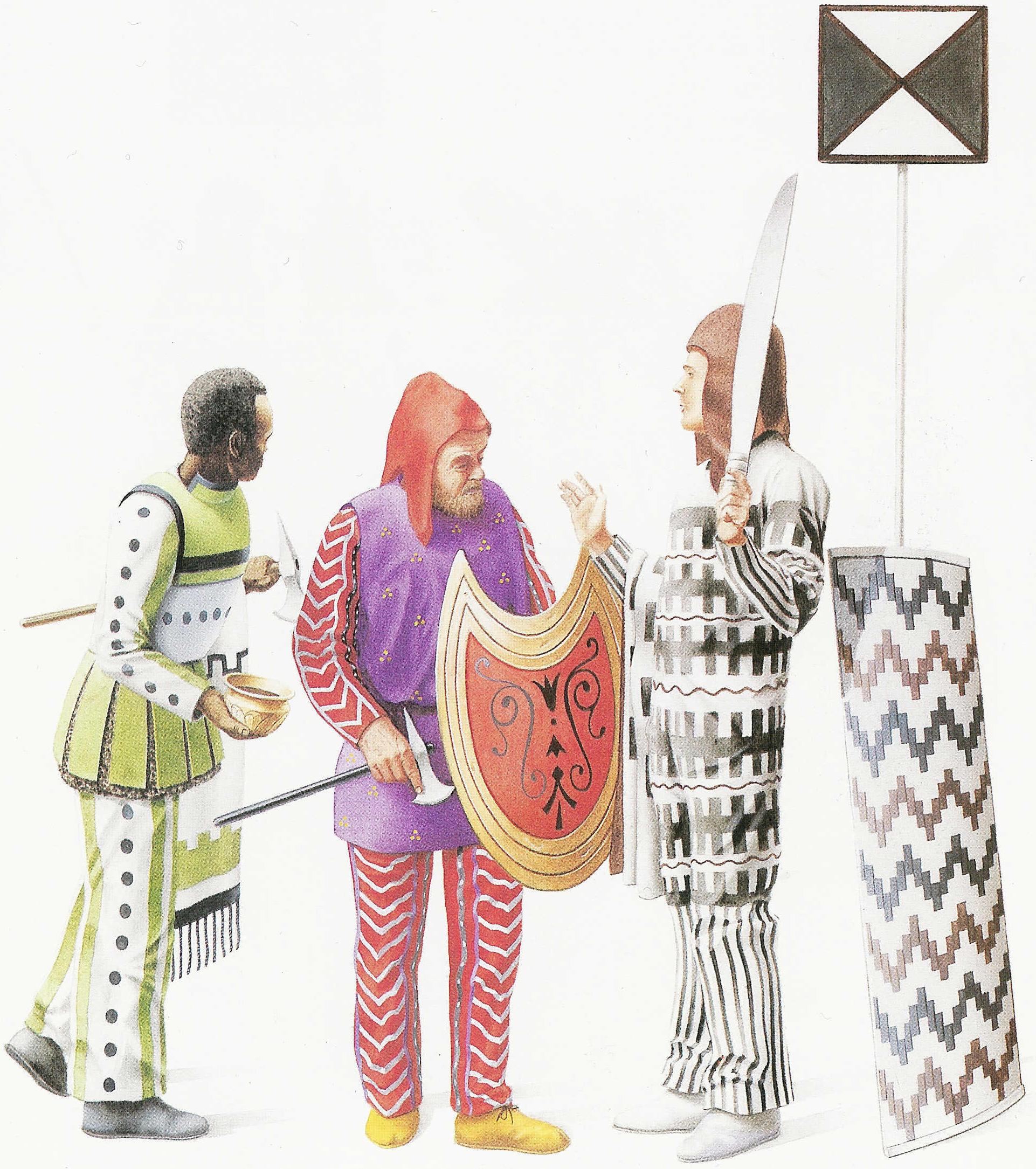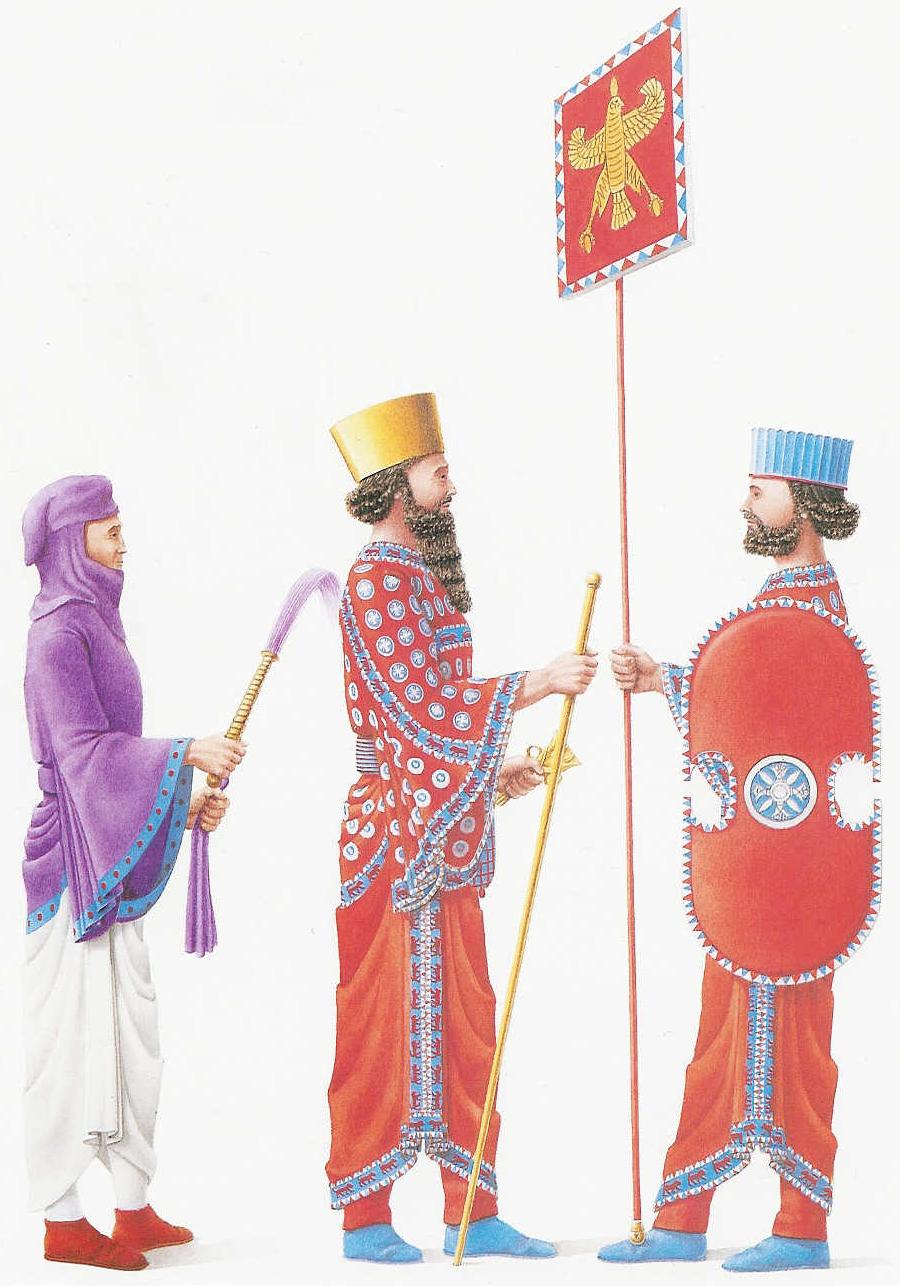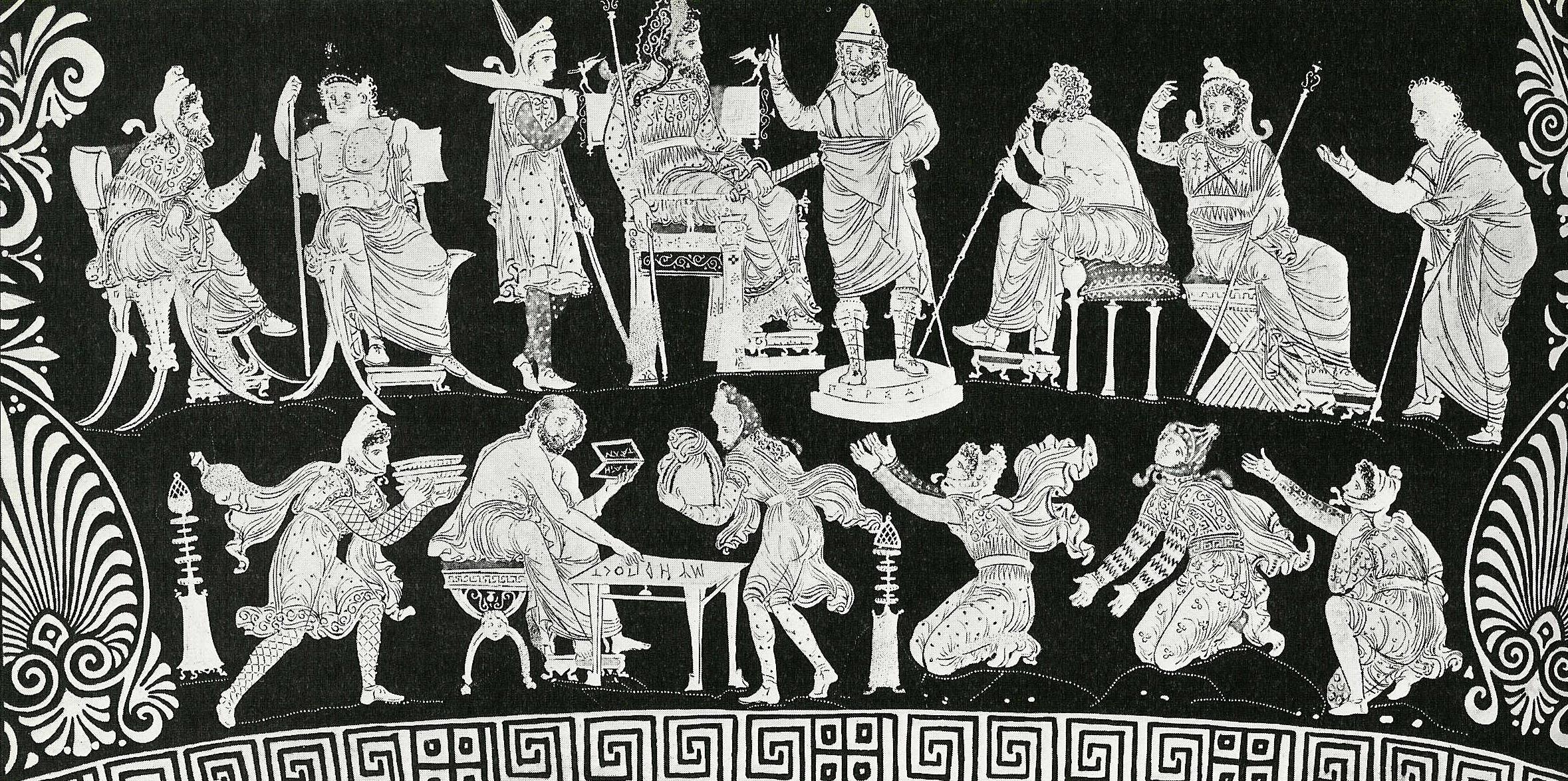What struck me most vividly in this movie was the following question:
Where are the Greek actors in this movie? After all, is this movie not narrating a story about ancient Greece?
The straight forward answer would be that the movie producers were depicting the characters of a graphic novel, which may explain their casting decisions. There still remains the question however of why not at least consider utilizing Greek actors to portray Greek historical characters?
Hollywood’s is intent on conveying a certain “image” of the Classics. Perhaps there is a desire to “Nordify” ancient Greece just as there is a desire to “Orientalize” the ancient Iranians. At least the portrait of King Leonidas in the movie was consistent with the depictions of ancient Greeks as seen in the vases of Classical Greece. For a previous discussion of the depiction of Greeks and Iranians in Hollywood by the author, kindly consult:
When it comes to the portrayal of the Iranians and the Greeks, I find the following observation by Dr. Ahmad Sadri (College Professor of Islamic World Studies, Lake Forest College) rather astute:
Snyder’s Persians – I am not talking about the disposable extras covered up to their eyes in male burqas – are predominantly black and by implication of mannerism and affect, homosexual. Allowing the widest berth for the genre and medium one still marvels at Snyder’s audacity in demonizing the “Asiatic hordes” while morphing the Spartan warrior into the typical white American survivalist. Snyder’s Spartans are white guys fighting a sea of racially inferior blacks, yellows and browns.
As I walked out of the theater during the closing credits, I heard the following comment by one of the viewers in the audience:
This movie chose really excellent Eye-ranian
[Iranian] actors – they showed them so accurately – just what you would expect them to be …It is very interesting that in this movie (and its comic book original) insists on portraying the “Persians” (especially the elites) as black Africans. In the movie trailer, King Leonidas is shown kicking the “Persian messenger” into a bottomless pit and shouting “This is Sparta!”:
Movie Trailer for 300
The “Persian messenger” is black. Other Persians in the film are also black, including a “Persian” general executed by Xerxes and a “Persian” emissary sent to communicate with Leonidas – the latter role being played by talented actor Tyrone Benskin ( Marked Man, 1996; Sci-Fighters, 1996, etc.):
Interestingly, the recent movie, Alexander (starring Colin Farrell), featured (with few exceptions) Arabic speaking North Africans instead of Iranians in the role of “the Persians”, whereas the 300 book and movie portrays Iranians as Africans. As we shall see later below, there are indications that Hollywood (in general) believes that such portrayals, however inaccurate, “sell better” in North America and Northwest Europe.
There are NO Greek or Roman references to black “Persians” and Greco-Roman sources also CLEARLY distinguish between the Arabs of antiquity and “the Persians.” Greek vase art from the Classical period show “the Persians” as remarkably similar to the Greeks – their differences are in wardrobe and equipment:
In this discussion, I will make use of the term “Iranian” as opposed to “Persian” as the former is more inclusive and includes Kurds, Azeris, Persians and other peoples of Iranic origin. The term “Persian” was used by the Greeks to designate all Iranian peoples of the time, when in fact, the Medes and the Scythians (Saka) were also partners in empire alongside the Persians.
There is a dearth of primary sources to help archeologists, anthropologists and historians reconstruct the ancient Iranians contemporary to Xerxes’ invasion of Greece. Note the clear distinction that is made between African (Ethiopian) and Caucasian (Iranian) troops by Greek vase-arts:
[CLICK TO ENLARGE] African levy in Achaemenid service (left) and Iranian troops (right) as portrayed in Greek art. The Greeks clearly distinguished between the Iranians (portrayed as Caucasians)
and Africans in their artistic works (Nick Sekunda, The Persian Army, Osprey Publishing, 1992, p.16-17).As a Classical historian, Sekunda has reconstructed King Xerxes, Iranian warriors as well as their African contingents:
Ethiopian marine (left), Iranian warrior (centre) and Iranian spearbearer
(Nick Sekunda, The Persian Army, Osprey Publications, 1992, Plate C; Paintings by Simon Chew).
Note how these re-constructions differ from how Iranians have been portrayed in the “Alexander” and “300” movies.The Iranians shown in the centre and right would not look unusual in today’s Iran. Later Roman sources also provide a very clear and detailed pictorial view of the Iranians contemporary to the 3rd – 7thcenturies AD. Note the Roman drawing of the three Iranians in Persian dress from Ravenna, Italy:
Roman depiction of Iranian nobles depicted here as the three wise men.
It is clear that the Romans were objective in their portrayal of their enemies,
the Parthians and the Sassanians.The cultural and linguistic legacy of the Indo-European or “Aryan” arrivals on the Iranian plateau since at least the 2nd millennium BC continues to resonate in modern Iran, and in Iranian speaking Kurds in the Near East as well as the Caucasus and Central Asia. Please note that I use the word “Aryan” with considerable caution here, as we are referring to the Old Iranian from “Airya” and/or “Eire” which loosely means “Lord” or “freeman” – the closest European equivalent is the Irish word “Eire“.
However what makes Iran unique on the world stage of history is the fact that Iran is the world’s oldest multi-ethnic and multi-language nation in history. Before the Indo-European arrivals, Iran was already host to a vibrant Elamite civilization to the southwest as well as Manneans and Hurrians to the northwest and west. These peoples fused their culture with the incoming Iranian speaking Indo-Europeans – Iran has been a evolving tapestry of peoples ever since. In any of Iran’s cities one can find an array of faces and languages – from Turkish in the northwest to Arabic in south. There are Iranians of African descent as well, these being partly descended from Ethiopians who were settled along Iran’s Persian Gulf coast during the Achaemenid era.
Genetic researchers have conducted a number of detailed genetic studies on Iran, the Caucasus as well as the Near East. One example is a recent study by Professor Martin Richards and 26 other researchers who conducted a thorough genetic analysis of Turks, Arabs, and Iranians. The latter focused mainly on Iranian-speaking Kurds (mainly descendants of the Medes) and the mainly Turkish speaking Azerbaijanis of Iran (themselves descendants of the Media Atropatene – one of the ancient homes of the aforementioned Zoroastrian religion). There was also a large sample of Ossetians in the study; Ossetians speak variations of the Old Iranian Avestan language (the basis of many of the old Zoroastrian hymns). Armenians were also studied.
Put simply, the results show a very high incidence of U5 lineages – genes common among modernEuropeans as a whole. The results are aptly summarized as such:
… many Armenian and Azeri types are derived from European and northern Caucasian types (p.1263) … The U5 cluster … in Europe … although rare elsewhere in the Near east, are especially concentrated in the Kurds, Armenians and Azeris … a hint of partial European ancestry for these populations … not entirely unexpected on historical and linguistic grounds (p.1264)” [Richards et al., (2000). Tracing European founder lineages in the Near Eastern mtDNA pool.
American Journal of Human Genetics, 67, p.1263-1264, 2000]There were no genetic links between the Iranian groups cited and the Arabs of that study. Interestingly, a number of Turks from western Turkey in the Richard study showed incidences of the European gene markers, indicating mixtures with Greek and other European populations in the course of Turkish history. Suffice it so say that Caucasians with so-called “European” appearances are nothing unusual in today’s Iran … they are part and parcel of today’s multi-ethnic Iran.
Photograph taken in 1971 by Ali Massoudi of a girl from Rasht in Gilan province, Northern Iran (Source: R. Tarverdi (Editor) & A. Massoudi (Art editor), The land of Kings, Tehran: Rahnama Publications, 1971, p.116).
There seems to be very little international motivation to understand the multifaceted nature of the Iranians themselves as well as their history and culture. A survey by Jack Shaheen (author of “The TV Arab“, 1984) in the early 1980s found that over 80 percent of North Americans wrongly believe Iranians to be Arabs and to speak Arabic. This may explain in part the persistence of the “Hollywood Persian” image in the entertainment industry.
Addendum: Is there a Case of Institutionalized Discrimination against Iranians in Hollywood?
There are disturbing indications that a subtle form of racism has at times been applied in Hollywood against actors and extras of Iranian origin. A vivid example of this was demonstrated over 15 years ago during the filming of the action movie “The Hitman“, starring Chuck Norris, released in 1991.
A portion of the filming took place in North Vancouver, British Columbia in Canada in 1989-1990. The directors and Norris put ads in the local papers asking for Iranians to audition as extras for the movie. What happened next is as comical as it is tragic.
Many of the “Iranians” who showed up on the set proved to be a major disappointment to Norris. This is because, far from fitting into the popularized “Hollywood Persian” stereotype, the potential Iranian extras displayed a variety of phenotypes. The group included Iranians from the northern regions (Gilan, Mazandaran, Semnan, Talesh), the northwest (Azerbaijan) and the west (Lurs and Kurds) as well people from Isfahan and Tehran. Many of these could appear as “regular Americans” on the street or in your local shopping mall. The directors and Norris were very disappointed at this and were visibly upset. Here is an excerpt by one of the auditioning Iranian extras on the set (his identity withheld at his request):
… the directors came to the set and were upset to see us. Among us were Mashadis of Turcomen background [with Central Asian/Far eastern appearance], Baluchis and more blondish types from the north and west…Norris and the directors said ‘what are these Caucasians doing on the set? I said I want ‘Iranian extras’ not Caucasians … Americans like to see real Iranians …”
The recruiters then explained that the “Caucasian” extras were natives of Iran from the north, Tehran and the northwest, but to no avail. Norris and the directors insisted on expelling the (so-called) “Caucasians” from the set. Similar reports have been reported by the aforementioned Jack Saheen with respect to Arab actors of Lebanese origin. Hollywood certainly is not free of human bias, seriously compromising any educational value of some of its “historical” releases. This leads us to the fantastic depiction of Xerxes himself:
A fantasy depiction of Xerxes in the movie 300 (left) versus the historical depiction of Xerxes in Achaemenid arts at persepolis (right)
If the portrayal “the Persians” is fictional, that of Xerxes has set new parameters for creativity. For a thorough analysis of the actual appearance of Xerxes, kindly consult Daniel Pourkesali’s article:
As noted astutely by Daniel Pourkesali in the above article, the movie’s portrayal of Xerxes is based faithfully on the graphic novel, but widely divergent with historical depictions of Xerxes.
Below is another reconstruction by Professor Sekunda of Xerxes as he would have appeared in Greece.
Court Eunuch (left), King Xerxes (centre) and Royal Spearbearer (right) (Nick Sekunda, The Persian Army, Osprey Publications, 1992, Plate B; Paintings by Simon Chew).
Below is a Classical Greek depiction of Xerxes when he was still a prince in the court of his father, Darius the Great:
Greek depiction of Darius the Great (seated on throne in top row at centre) debating with his advisors as to whether he should invade Greece in 490 BC. Prince Xerxes is seen on the top row, second from the right.The Miller/Warner Brothers portrayal of Xerxes and the way he would have historically appeared are literally as different as day and night. Professor Ephraim Lytle, a Hellenistic historian at the University of Toronto in Canada, has aptly summarized the picture’s portrayal of Xerxes and “the Persians”:
300’s Persians are ahistorical monsters and freaks. Xerxes is eight feet tall, clad chiefly in body piercings and garishly made up, but not disfigured. No need – it is strongly implied Xerxes is homosexual which, in the moral universe of 300 qualifies him for special freakhood. [Professor Ephraim Lytle, “Sparta? No. This is Madness”, The Toronto Sun, March 11, 2007]
Chapters:
- The Notion of Democracy and Human Rights
- What really led to War
- The Military Conflict: Separating Fact from Fiction
- The Error of Xerxes: The Burning of Athens
- The “West” battling against the “Mysticism” of “the East”
- The Portrayal of Iranians and Greeks
- A Note on the Iranian Women in Antiquity
- “Good” versus “Evil”
- Bibliography

